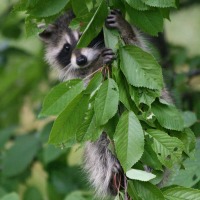Press Release
FOR IMMEDIATE RELEASE
Contact: Charlene Perkins Cutler, Executive Director
508-234-4242
ccutler@BlackstoneHeritageCorridor.org
Volunteerism on the Rise in Blackstone Heritage Corridor
BHC Releases Inspiring Year-End Volunteer Report
Blackstone Valley (October 27, 2016) – A year-end report filed by Blackstone Heritage Corridor, Inc. (BHC) for its National Park Service Volunteers-in-Parks (VIP) program reveals that volunteerism is on the rise in the Blackstone River Valley National Heritage Corridor.
For fiscal year 2015-2016, a total of 1,283 volunteers donated their time to a number of programs for a total of 13,431 hours, a significant increase from the previous year with 6,651 hours recorded for 146 volunteers. The dollar value of a volunteer’s time for fiscal year 2015-2016, at $23.56 per hour, came to the considerable sum of $316,434.
“We are thrilled to see the increase in volunteerism here in the Blackstone Heritage Corridor,” remarked Charlene Perkins Cutler, BHC’s Executive Director. “Since our relocation to Whitinsville, MA, this past spring, interest in our organization has spiked considerably.”
BHC manages the Volunteers-in-Parks program for the National Park Service. Nationally, VIPs work side-by-side with National Park Service employees and partners in parks across the nation to help preserve the nation’s most precious natural, historical, recreational and cultural treasures. Locally, volunteers are placed throughout the 25 communities of the Blackstone River Valley National Heritage Corridor and the historic nodes of the Blackstone River Valley National Historical Park.
With the launch of its Trash Responsibly™ program last fall, volunteer numbers started to increase with the cleanup events BHC spearheaded and partnered with throughout the National Heritage Corridor. With this program alone, 907 volunteers signed up as one-day volunteers for 22 cleanup events and gave 4,066 hours of their time. BHC also launched a corporate “Day of Service” program, working with local companies and employees to make a difference in the communities that they live or work in. From cleaning historic sites inside and out, to landscaping the grounds, 58 employees from five companies gave 203 volunteer hours.
According to Suzanne Buchanan, BHC’s Volunteer Coordinator, many of BHC’s long-term VIPs incorporated the Centennial celebration of the National Park Service into popular programs including weekly paddles with the Blackstone Valley Paddle Club, exploring many tributaries of the Blackstone River. In partnership with the VIPs, three National Park Service Ranger interpretive paddles were held this past season, highlighting Slatersville Reservoir, Hopedale Pond and the Blackstone Canal. In addition, there were weekly bike rides with the Blackstone River Bikeway Patrol, exploring all the bikeways within the boundaries of the National Heritage Corridor, including three “Ride with a Ranger” interpretive tours on the Blackstone River Bikeway highlighting the historical significance of the Blackstone River and Canal.
“This was an exciting year for the volunteer program,” remarked Buchanan. “Several people came forward wanting to offer new programs, including “Birding on the Blackstone” by VIP Rosanne Sherry offered in the spring at the Blackstone River State Park in Lincoln, RI, and in the fall at Blackstone River & Canal Heritage State Park (River Bend Farm) in Uxbridge, MA. Volunteers from Trout Unlimited Chapter 737 in Rhode Island partnered with the Blackstone River Watershed Council/Friends of the Blackstone and offered a day-long fly fishing school along the banks of the Blackstone River.”
BHC’s second annual GO! program in September gave the opportunity for 66 volunteers to lead experiences throughout the National Heritage Corridor, ranging from a full moon walk, guided tours through historic cemeteries, interpretive walking tours at places like the Millville Lock and Triad Bridges, and much more.
A big jump in volunteer numbers came by way of a youth service project sponsored by Youth Unlimited of Grand Rapids, Michigan. Volunteers, 104 in total, were hosted by the Pleasant Street Christian Reform Church and registered as VIPs for a week of service in the communities of Northbridge, Uxbridge, Millville, Douglas and Grafton, MA. A total of 3,168 volunteer hours were tallied as they tended to site maintenance at the Millville Lock, trail work at Blackstone River & Canal Heritage State Park/River Bend Farm, and more. This was the first of a three-year commitment from Whitinsville Serve, with more volunteers returning the summer of 2017.
The VIP program also benefitted financially from one volunteer’s former employer. Joe Richer, a Woonsocket, RI-resident, worked for Pfizer prior to his retirement and when he decided he wanted to volunteer to stay active, he remembered the Pfizer Foundation Volunteer Program which encourages volunteerism among Pfizer colleagues and retirees and helps them obtain grants for non-profits where they regularly volunteer. Richer volunteered at Blackstone River & Canal Heritage State Park/River Bend Farm and at the Capt. Wilbur Kelly House Transportation Museum, and after meeting Pfizer’s requirements (employees must volunteer for at least six months and serve an average of six hours per month for a minimum of 72 total hours) Richer worked with Buchanan to apply for the grant. BHC received a check for $1,000 from Pfizer in October, which will be applied to the volunteer program for supplies.
“We are also pleased to play a part in helping volunteers move along their career path by way of volunteering with us,” Buchanan added. “I just got an email from one of our volunteers, Blake Stone, letting me know he was just accepted into a Geoscientists-in-the-Parks (GIP) program at Death Valley National Park. He used his experience volunteering this summer with Coes Zone in Worcester, MA, helping with water quality programs.”
“I knew that practicing skills in water resource management would be beneficial to both myself and the watershed,” Blake Stone said. “I enjoy researching water quality, and having the opportunity to volunteer as a citizen scientist in the Blackstone River Valley helped me in preparing my application to the Geoscientists-in-the-Parks (GIP) program at Death Valley National Park. I am proud to have begun my VIP experience with the Blackstone River Valley National Heritage Corridor, and I recommend getting involved with your local park no matter what your background and interests may be.”
BHC hosts monthly Volunteer Open House events with the next ones scheduled for Monday, November 14, 2016 at 6:30 p.m., and again on Monday, January 9, 2017 at 6:30 p.m., at its offices at Linwood Mill, 670 Linwood Avenue, Whitinsville, MA. To register, call Suzanne Buchanan at 508-234-4242 or email volunteer@BlackstoneHeritageCorridor.org. To learn more about BHC, visit BlackstoneHeritageCorridor.org.
About Blackstone Heritage Corridor, Inc.:
An energetic nonprofit, the Blackstone Heritage Corridor, Inc. partners with organizations, local communities, businesses and residents to ensure the long term vitality of the Blackstone River Valley National Heritage Corridor. Learn more at BlackstoneHeritageCorridor.org.
####


